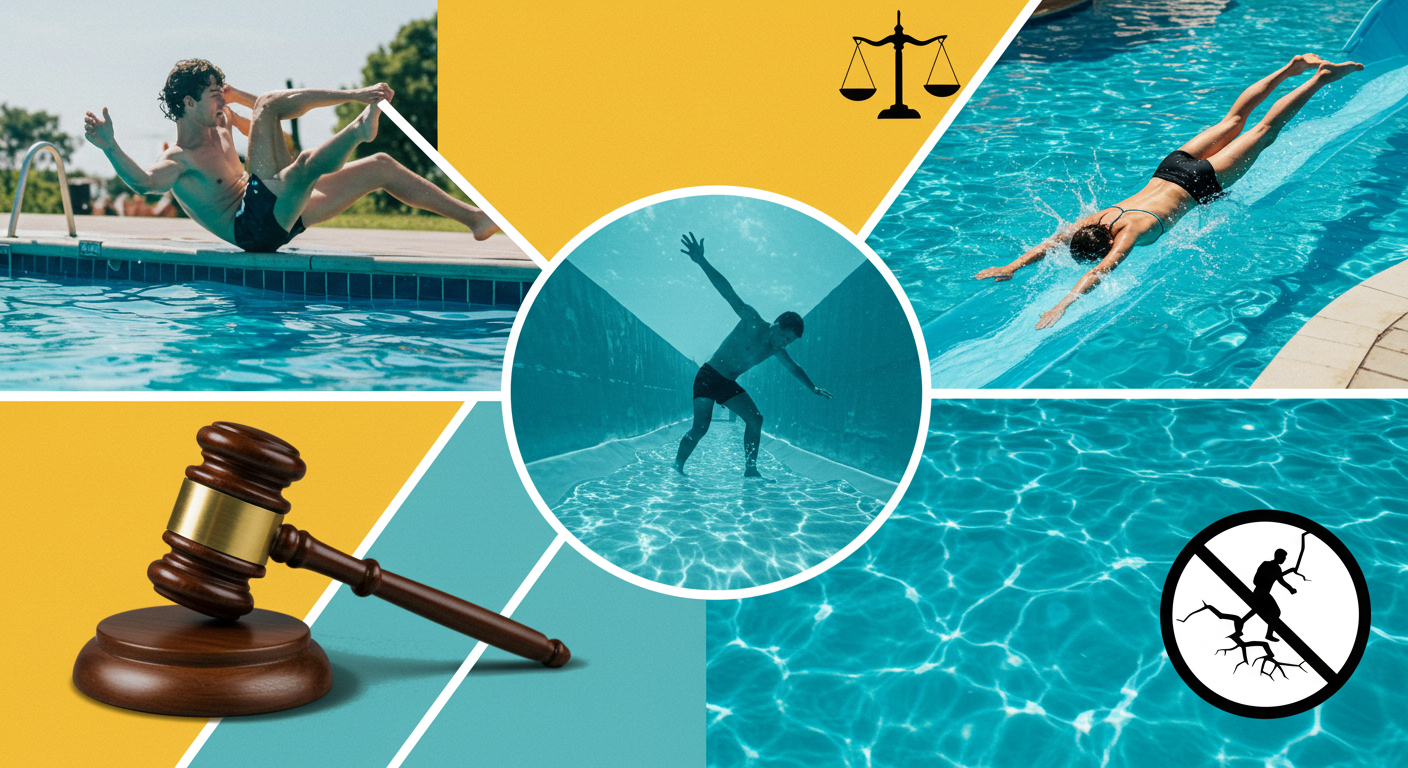Key Takeaways:
- Property management companies, waterpark maintenance teams, lifeguards, and attraction operators can be possible defendants in an injury or wrongful death lawsuit.
- It is important to establish a clear connection between your injury and another person’s negligence, such as faulty pool maintenance or defective waterpark rides.
- You must follow the three-year statute of limitations on personal injuries to recover damages.
- South Dakota comparative negligence law states that you may recover damages in an accident that you are partially responsible for, so long as you are no more than 49% accountable.
- A personal injury attorney can help you explore your rights and build a strong case in South Dakota.
South Dakota residents and families love to visit pools and waterparks during the summer, but unfortunately, some people are injured during their visit. They may suffer brain damage from lack of oxygen due to drowning, broken limbs, muscle strains, cuts from falls, and more. In these cases, you may be able to take legal action against the lifeguard, a waterpark employee, or the company that manages the attraction.
In this guide, the team at Alvine Law Firm explores the nature of pool and waterpark injuries in South Dakota, relevant laws that a person should know if they have been injured, and possible legal damages they may be able to recover through settlement or court.
Types of Pool and Waterpark Injuries
There are many accidents you or your child might experience at a South Dakota pool or waterpark, including:
- Drowning and Near-Drowning: The most serious and often fatal type of injury.
- Slip-and-Fall Accidents: Caused by wet surfaces, uneven decks, or obstacles.
- Diving Injuries: Spinal cord injuries, head trauma, and other injuries resulting from diving into shallow water or striking the bottom/sides of the pool.
- Water Slide Injuries: Injuries sustained on water slides, such as whiplash, fractures, or lacerations.
- Entrapment: Getting trapped in waterpark slides, rides, drains, suction outlets, or other underwater hazards.
- Infections: Contracting illnesses from contaminated water.
- Chemical Burns: Injuries caused by improper chemical balance in the water.
- Equipment Malfunction: Injuries caused by defective or poorly maintained equipment (slides, ladders, diving boards).
Whether your injury is mild or severe, you have the right to hold negligent parties accountable for your medical costs and emotional suffering. Even if you are partially at-fault, you can still recover losses under South Dakota’s comparative negligence law.
Under the comparative negligence structure, South Dakota evaluates both parties’ involvement in an accident to determine a percentage of fault. Your fault will be deducted from any compensation as a percentage, so long as it is under 50%.
We say this to encourage you to take legal action even if you believe you contributed to your injury in some way. The law is there to protect you and other victims by allowing them to still receive compensation when they have been harmed.
You can schedule a free call with a South Dakota personal injury attorney –click here to book an appointment.
Who Is Responsible for Pool or Waterpark Injuries in South Dakota?
South Dakota Codified Law 20-90-1 states that any person can be held responsible for harm to another person due to negligence or by want of ordinary care or skill. In simpler terms, this means that a person is legally responsible for injuries if they deliberately cause them or if they do not take reasonable measures to prevent them.
For example, if you are injured because a publicpool did not properly mark its depths or place a “No Diving” sign, then you could seek legal damages from the company that manages the property.
Likewise, a waterpark attendant who did not enforce safety policies such as height or weight restrictions on a ride could be held liable for a person’s injuries. In this case, you would also likely have to file a lawsuit against the waterpark company as well, since the companies are generally liable for the conduct of their employees on their premises.
Potential Defendants
If you or your child are injured in a pool or waterpark injury, the most likely defendant would be a property owner. For example, if someone invites you to their home to use a pool, or a waterpark offers its attractions to the public, the property owner — be it an individual or company — has the legal duty to protect visitors.
To determine who is at-fault for your injury, ask yourself who was responsible for your safety and welfare at the time of the incident. For example, did a lifeguard fail to take action when you or your child were in distress in the water? Or was faulty pool or waterpark maintenance responsible for your injury?
Finding the right defendant is crucial; you will save time, stress, and money by ensuring you are positioning your argument against the at-fault party.
Determining Legal Fault for an Injury
South Dakota recognizes personal injury liability in cases of negligence, gross negligence, intentional harm, breach of duty.
Negligence is failure to exercise reasonable care; gross negligence is a higher penalty in which a person’s lack of care is so reckless that it causes serious harm. The punitive damages for gross negligence can be higher, ensuring that victims are fairly compensated for their injury, losses, and suffering.
It is also important to understand South Dakota’s attractive nuisance doctrine; this holds property owners responsible for injuries to children on their property, even if the children were not invited. The attractive nuisance doctrine applies when a feature on the property is attractive to children who are unable to understand its risk.
For example, a pool that does not have a fence around it could attract a child and lead to potential drowning. The property owner who did not surround their pool with a child-proof fence could be held liable for the child’s death or injuries.
What to Do After a Pool or Waterpark Injury
Acquiring documentation is crucial to building a strong case. Seek medical treatment if you have not already, and keep as much information as you can, including medical images such as MRIs and X-rays, medical bills, and discharge summaries.
You should also report the incident to the pool or waterpark manager and document the date and time of the report. It is always best to report information in writing and keep copies of any communication you have with the staff, such as emails.
To support your case, be sure to take photos of injuries and the scene of the crime to illustrate your claim. This could include photos or videos of improper or absent signage, unmaintained rides, and damaged clothing or physical injuries.
Next, contact a lawyer to discuss your options. We act swiftly to help our clients seek compensation as soon as possible. We understand the extent your injury has on your life, and we want to ensure you receive the restitution you deserve.
If you are offered a statement or settlement by the property management or pool owner, do not sign anything before consulting an attorney.
Connect With Our Team
Reach out to Alvine Law Firm in Sioux Falls, SD, for support from our experienced attorneys. We are here to help. You can discuss your injury and potential case in a free, no-obligation consultation at your convenience. Please click here or call 605-275-0808 to schedule your call. We look forward to speaking with you.

